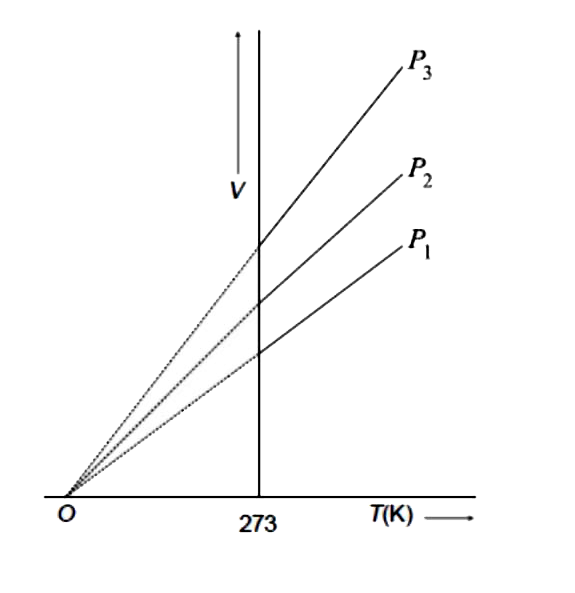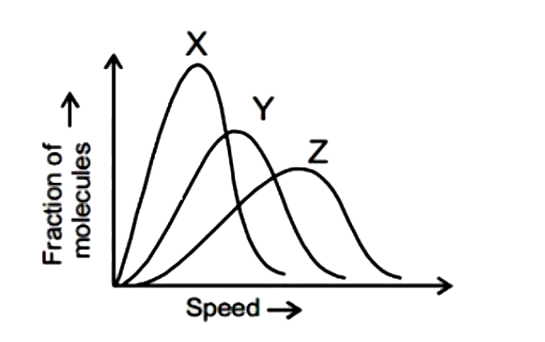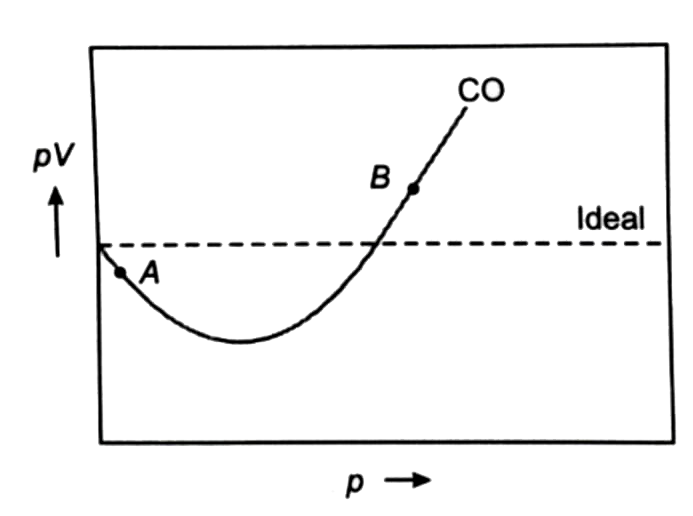Complete Solutions to SINGLE CHOICE QUESTION of chapter STATES OF MATTER : GASES AND LIQUIDS of Class 12 book with complete answers and questions
| Class 12 | CHEMISTRY |
| Chapter | STATES OF MATTER : GASES AND LIQUIDS |
| NTA MOCK TESTS | SINGLE CHOICE QUESTION |
| Number Of Questions | 30 |
| Academic Year | 2023-24 |
The third viral coefficient for real gas is `2 xx 10^(-2) ("L mole"^(-1))`. The molar volume of gas at `27^@`C and 5 atm Pressure may be-
View SolutionA closed vessel contains an equal number of molecules of `N_2` and `O_2` at a total pressure of 650 mm of Hg. If `N_2` is completely removed the pressure will,
View SolutionConsider the graph between compressibility factor Z and pressure P:

The correct increasing order of ease of liquefaction of the gases shown in the above graph is:View SolutionA cylinder contains nitrogen gas and a small amount of liquid water at a temperature `25^@`C. (The vapour pressure of water is 23.8 mm Hg.) The total pressure is 600 mm Hg. A piston is pushed into the cylinder until the volume is halved. What is the final total pressure? (In atm)
View SolutionThe average molecular speed is greatest in which of the following gas samples ?
View SolutionA container contains some gas molecules and each have mass 10 -26 kg and volume of the container is `1 dm^3`. The RMS velocity of gas molecules is 1 km `sec^(-1)` than what is the temperature of gas molecules. (Given: `NA = 6 xx 1023, R = 8 J "mol"^(-1)`K)
View SolutionVan der Waal's equation for a gas is stated as,
`p = (nRT)/(V-nb) - a(n/V)^(2)`.
This equation reduces to the perfect gas equation, `p = (nRT)/V` when,View SolutionAt `10^@`C, the density of a fixed mass of an ideal gas divided by its pressure is X. At `110^@`C, this ratio would be
View SolutionCalculate the total pressure in a 10.0 L cylinder which contains 0.4 g helium, 1.6 g oxygen and 1.4 g nitrogen at `27^@`C
`{R = 0.082 L "atm" K^(-1) "mol"^(-1)}`View SolutionThe volume-temperature graphs of a given mass of an ideal gas at constant pressures are shown below. What is the correct order of pressures ?
 View Solution
View SolutionAn open vessel at `27 ^@`C is heated until 3/8th of the air in it has been expelled. Assuming that the volume remains constant, calculate the temperature at which the vessel was heated
View SolutionThe rates of diffusion of `SO_(2), CO_(2), PCl_(3)` and `SO_3` are in the following order:
View SolutionThe density of a gas-filled electric lamp is 0.75, after the lamp has been switched on, the pressure in it increases from `4 xx 10^4` Pa to `9 xx 10^4` Pa. What is increase in `U_("rms")` , assuming the volume at gas in the lamp is constant.
View SolutionThe rms speed of `N_2` molecules in a gas is u. If the temperature is doubled and the nitrogen molecules dissociate into nitrogen atoms, the rms speed becomes
View SolutionA gas obeys the equation of state `P(V_m – b) = RT`. The slope of the isochore will be
View SolutionIn the following reaction, we start with 2 mol of `N_2` and 5 mol of `H_2` exerting a total pressure of 7 atm at a given temperature in a closed vessel. When 50% of `N_2` is converted into `NH_3`
`N_(2) + 3H_(2) to 2NH_(3)`
Partial pressure of `NH_3` is :View SolutionThe weight of 350 mL of a diatomic gas at `0^@`C and 2 atm pressure is 1g. The weight of one atom is
(N is the Avogadro's Number)View SolutionFor the given isotherm for one mole of an ideal gas, which follows Boyle's law, what will be the value of temperature (R = 0.0821 (L atm/mol/K))
 View Solution
View SolutionAn ideal gas is initially at temperature T and volume V. It's volume increases by `DeltaV` due to an increase in temperature of `DeltaT`, pressure remaining constant. The quantity `mu = (DeltaV)/(V DeltaT)` varies with temperature as -
View SolutionWhat is the correct relation between critical temperature Tc, Boyle's temperature `T_B` and inversion temperature `T_(i)`.
View SolutionIf the rate of diffusion of A is 5 times that of B, what will be the density ratio of A and B ?
View SolutionAt what temperature will the molar kinetic energy of 0.3 mol of He be the same as that of 0.4 mol of argon at 400 K ?
View SolutionA mixture of dihydrogen and dioxygen at one bar pressure contains 20% by weight of dihydrogen. Calculate the partial pressure of dihydrogen.
View SolutionConsider the following graph:

X, Y and Z can be respectively.View SolutionA sample of air contains only `N_(2), O_(2)` and `H_(2)`. It is saturated with water vapours and the total pressure is 640 torr. The vapour pressure of water is 40 torr and the molar ratio of `N_(2) : O_(2)` is `3: 1`. The partial pressure of `N_2` in the sample is:
View SolutionFor 1 mol of an ideal gas, `V_(1) gt V_(2) gt V_(3)` in fig. 1, `T_(1) gt T_(2) gt T_(3)` in fig. 2, `P_(1) gt P_(2) gt P_(3)` in fig. 3, and `T_(1) gt T_(2) gt T_(3)` in fig. 4, then which curves are correct.

 View Solution
View SolutionA gas can be compressed to a fraction of its volume. The same volume of a gas can be spread all over a room. The reason for this is that
View SolutionFor Co, isotherm is of the type as shown. Near point A, compressibility factor Z is:
 View Solution
View SolutionThe ratio of rates of diffusion of gases X and Y is `1 : 5` and that of Y and Z is `1 : 6`. The ratio of rates of diffusion of Z and X is:
View SolutionUnder which of the following conditions do real gases approach the ideal gas behavior ?
View Solution
SINGLE CHOICE QUESTION questions and complete solutions for chapter STATES OF MATTER : GASES AND LIQUIDS of NTA MOCK TESTS of Class 12
